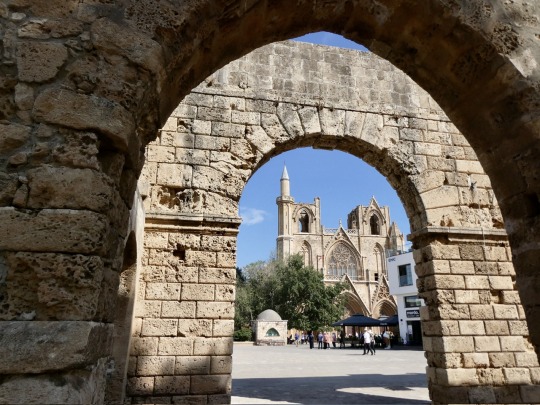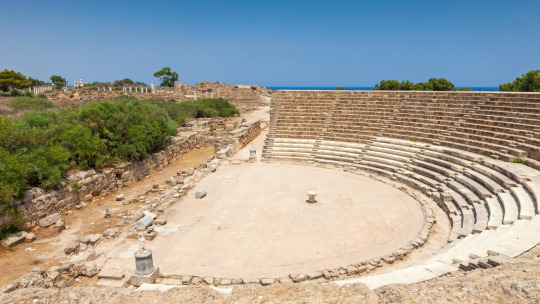#salamis
Photo

Salamina Island, Greece
308 notes
·
View notes
Photo

Sailing Ship 'Salamis', by Jack Spurling (1870-1933)
197 notes
·
View notes
Text
Solon of Salamis was one of Ancient Athens’ greatest leaders. The radical changes he implemented marked the great power’s first step towards democracy.
11 notes
·
View notes
Text

8 notes
·
View notes
Text

Happy May Day!!! 🌸🇬🇷
Girl dressed in the traditional attire of Salamína with a May wreath.
#greece#may day#traditional dress#folk dress#historical fashion#flowers#traditional clothing#folk clothing#salamina#saronic islands#central greece#sterea hellas#greek islands#salamis
60 notes
·
View notes
Text


Battle of Salamis by Wilhelm von Kaulbach
#battle of salamis#naval battle#ancient#art#greece#greek#greek city states#achaemenid empire#persian empire#salamis#themistocles#king xerxes#eurybiades#artemisia#ariabignes#tetramnestos#achaemenes#damasithymos#xerxes#artemisia i of caria#xerxes i of persia#persia#persian#athenian#spartan#history#europe#mediterranean
39 notes
·
View notes
Text
One important societas consisted of publicani (publicanus meant ‘state-authorized’). These were in fact private-sector businessmen who bid for state contracts, e.g. to build an aqueduct, work a mine, provide supplies to the legions, collect harbour dues and so on. The most famous example is probably that of the publicani gathering taxes in the province of Asia (modern Turkey). Rome calculated how much tax it needed to gather from a province – in this case, one-tenth of agricultural produce. Societates would then be invited to bid to collect that sum. The winners paid the whole sum up front as a ‘loan’ to the state treasury, and so received interest on it from the state (though only when the work had been completed). The aim of the publicani, however, was to collect more than the state required, generating pure profit on top of the interest. That was where the big financial gains lay. It was for this reason that the Bible connected these ‘publicans’ with ‘sinners’, because of the reputation they gained for ruthlessly exploiting their position.
In 193 BC, interest rates between Romans were restricted. So Romans who had lent money to other Romans would contact a friendly non-Roman socius and make him the lender. This was just a technical matter of transferring the loan from his loan book to the socius’s loan book, so that it was now under the socius’s name. Being non-Roman, the socius could charge any interest rate he liked. Result: he and his Roman chum both made a handsome profit. ‘Profit’ and ‘proficient’ both derive from Latin proficio (profect-), ‘I make headway, gain results, increase in size or extent’. As a result, debt was increasing at an intolerable rate. Eventually, the Roman authorities got wise to this fraus, a Latin term which combined the ideas both of hurt and deception (our ‘fraud’). So they fixed a day when all socii had to declare loans made to Roman citizens. When it was discovered just how gigantic the sum was, the Romans passed a law that socii could lend to Romans only on the same terms as Romans could. So that little ‘offshore’ scam was halted.
In 88 BC, anyone lending in Italy could not charge more than 12 per cent per annum. So lenders looked to lend abroad, when they could charge whatever they liked. Many lenders, as well as lending their own money, borrowed yet more money in Rome at 12 per cent and then lent it out at 17 per cent. This is known as ‘gearing up’ and is common practice still. Cicero talked of the rich ‘sending out their ex-slaves [freedmen] to lend to and pillage the provinces’. Brutus (one of Caesar’s assassins) was one such. In 50 BC, he was lending money to the poverty-stricken people of Salamis, a town in Cyprus, and charging an interest rate of 48 per cent a year! Cicero, the provincial governor of that year, refused to collect it because he had imposed a fixed rate of 12 per cent. But Brutus persuaded the Senate to force Cicero to do so. That, incidentally, was how Cicero found out that it was Brutus who was lending the money: very often the great and good liked to hide their moneylending operations behind a third party, e.g. one of their slaves or freedmen.
#book : quid pro quo#brutus#cicero#ancient rome#fraud#linguistics#money lending#taxes#latin#interest rates#cyprus#salamis
0 notes
Text

Chicken sausages & salamis at best price | Top frozen food brand in Kolkata | Keventer
Savour the exceptional taste of Keventer Sausages & Salamis. Tempt your palate with our flavorful range. Click here to learn more.
#sausage#keventer chicken sausage#salamis#Sausage#chicken sausage#chicken sausage price#Keventer Frozen Chicken Sausage and Salami#Keventer Sausages & Salamis#top frozen food#frozen food brand#keventer sausages
0 notes
Text
Escaping Cyprusgrad: The Better Parts Of The East Coast

View On WordPress
#Ancient Greek sites#Cyprus#Donkeys#Famagusta#Golden Beach#independent travel#Karpaz National Park#Lala Mustafa Pasha Mosque#Mediterranean#Othello Castle#Roman sites#Salamis#Travel journalism#travel photography
0 notes
Photo

Salamina Island, Greece
112 notes
·
View notes
Text

Sailing Ship Salamis, by Jack Spurling (1870-1933)
130 notes
·
View notes
Text
The Battle of Salamis in 480 BC was a turning point in history. The small city-states of Greece combined their forces to take on the Persian Empire and, against the odds, won.
15 notes
·
View notes
Photo

Salamis ist eine antike Stadt auf Zypern, die im 11. Jahrhundert v. Chr. gegründet wurde. Die Stadt war ein wichtiger Handelsplatz und kulturelles Zentrum im östlichen Mittelmeer und spielte eine bedeutende Rolle in der Geschichte der Region. Salamis wurde von verschiedenen Eroberern genutzt, darunter die Perser, die Römer und die Byzantiner. Die Bedeutung von Salamis in der Bibel geht auf die Pilgerreise des Apostels Paulus zurück. Paulus besuchte Zypern im Jahr 45 n. Chr. und predigte in Salamis und anderen Städten der Insel. In der Apostelgeschichte wird berichtet, dass Paulus und sein Begleiter Barnabas in Salamis angekommen sind und in der Synagoge gepredigt haben. Sie reisten dann weiter nach Paphos und predigten auch dort. Die Pilgerreise des Apostels Paulus nach Salamis war ein wichtiger Moment in der frühen Geschichte des Christentums. Es war der Beginn der Verbreitung des christlichen Glaubens auf Zypern und in der Region des östlichen Mittelmeers. Die Bedeutung von Salamis als wichtiger Ort der Verkündigung des Evangeliums hat die Stadt zu einem bedeutenden Wallfahrtsort gemacht. Salamis hat im Laufe seiner Geschichte viele Veränderungen und Zerstörungen erlebt. Die Stadt wurde im Jahr 332 v. Chr. von Alexander dem Großen erobert und später von den Römern und Byzantinern genutzt. Im 7. Jahrhundert wurde Salamis von arabischen Eroberern erobert und geplündert, was zur Aufgabe der Stadt führte. Heute sind in Salamis noch viele Ruinen und Überreste der antiken Stadt zu sehen, darunter die Überreste des Theaters, des Gymnasiums, der Bäder und der Basilika. Die Stadt ist ein wichtiger archäologischer Ort und ein Symbol für die reiche Geschichte und Kultur der Levante. Die Stadt ist auch ein wichtiger Ort für Touristen, die sich für die Geschichte und Kultur der Region interessieren. Insgesamt ist Salamis ein faszinierendes Beispiel für die Geschichte und Kultur der Levante. Die Stadt hat eine reiche Geschichte, die bis ins 11. Jahrhundert v. Chr. zurückreicht, und hat im Laufe der Jahrhunderte eine wichtige Rolle in der Region gespielt. Die Pilgerreise des Apostels Paulus nach Salamis hat die Stadt zu einem wichtigen Ort der Verkündigung des Evangeliums und zu einem bedeutenden Wallfahrtsort gemacht. Heute ist Salamis ein wichtiger archäologischer Ort und ein Symbol für die Vergangenheit und Zukunft der Region.
0 notes
Text





when dudes are guys
#hhhbgrbbgbbrgbgrbbgrbbgrhrghrgbhgr::))))))#inscryption#flight rising#leshy#magnificus#kaycee hobbes#dragons#i wasnt even gonna includ mag but he got recognized by staff yesterday so i give him a little salami.#i feel like remy the rat when he ate the cheese and strawberry at the same time#frfanart
4K notes
·
View notes
Text
Artemisia, who moves me to marvel greatly that a woman should have gone with the armament against Hellas; for her husband being dead, she herself had his sovereignty and a young son withal, and followed the host under no stress of necessity, but of mere high-hearted valour. Artemisia was her name; she was daughter to Lygdamis, on her father's side of Halicarnassian lineage, and a Cretan on her mother's. She was the leader of the men of Halicarnassus and Cos and Nisyrus and Calydnos, furnishing five ships. Her ships were reputed the best in the whole fleet after the ships of Sidon; and of all his allies she gave the king the best counsels. The cities, whereof I said she was the leader, are all of Dorian stock, as I can show, the Halicarnassians being of Troezen, and the rest of Epidaurus.
— Herodotus VII.99.
#artemisia#herodotus#history#battle of salamis#ancient greece#ancient greek#ancient#greek#greece#europe#persia#persian#salamis#mediterranean#navy#naval battle#naval warfare#naval combat
8 notes
·
View notes
